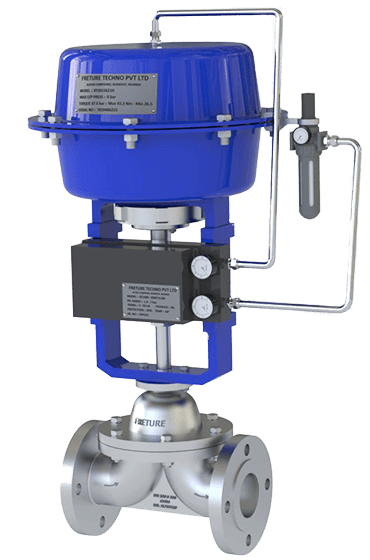Diaphragm control valves are essential components in fluid control systems, designed to regulate the flow, pressure, and isolation of liquids and gases. These valves use a flexible diaphragm to control the movement of fluid, providing a reliable, leak-proof operation. Due to their ability to handle corrosive, abrasive, and high-purity fluids, diaphragm control valves are widely used in industries such as pharmaceuticals, chemical processing, water treatment, and semiconductor manufacturing. Their superior sealing capabilities and durability make them a preferred choice for critical applications where leakage prevention is paramount.
Brief History & Evolution
The concept of diaphragm valves dates back to the early 20th century when industries required corrosion-resistant and sanitary valve solutions. Over time, advancements in elastomer technology, polymer engineering, and automation have significantly improved diaphragm control valves, making them indispensable for modern industrial applications. The early designs were primarily manual and used in water treatment facilities, but as industrial needs evolved, so did diaphragm valve technology. Today, they are available in manually operated, pneumatically actuated, and electronically controlled versions, offering greater efficiency and precision. Their development has been driven by increasing demands for better flow control, improved materials, and compatibility with automation systems.
Working Principle & Design
Diaphragm control valves operate using a flexible diaphragm that moves up and down to control fluid flow. The key components include:
Body: The main structure that houses the internal components.
Diaphragm: The flexible membrane that separates the fluid from the valve mechanism.
Actuator: The control mechanism, which can be manual or automated.
When the actuator applies force, the diaphragm moves downward, restricting flow. Releasing the force allows the diaphragm to return, enabling fluid passage. This simple yet effective design ensures minimal leakage and smooth operation.
The internal weir structure found in some models provides a greater level of control, making them suitable for precise dosing applications. Additionally, modern diaphragm valves integrate sensor technology and automated feedback mechanisms to optimize fluid regulation in high-precision environments.
Types of Diaphragm Control Valves
Weir-Type Diaphragm Valves
Ideal for precise flow control.
Used in pharmaceutical and chemical industries.
Suitable for slurries and viscous fluids.
Provides improved shutoff performance compared to straight-through designs.
Straight-Through Diaphragm Valves
Designed for high-viscosity fluids and minimal flow resistance.
Commonly used in wastewater treatment and bulk fluid handling.
Suitable for applications requiring full bore flow with minimal pressure loss.
Manual vs. Automated Diaphragm Valves
Manual: Operated using a handwheel or lever, ideal for simple, on-off applications.
Automated: Uses pneumatic, electric, or hydraulic actuators for precision control in automated systems, improving process efficiency.
Materials & Construction
Diaphragm Materials
PTFE (Teflon): High chemical resistance and durability, ideal for aggressive chemicals.
EPDM (Ethylene Propylene Diene Monomer): Ideal for hygienic applications, resistant to heat and steam sterilization.
Rubber (Natural & Synthetic): Offers flexibility and cost-effectiveness, used in general industrial applications.
Valve Body Materials
Stainless Steel: Preferred for corrosive environments and sanitary applications.
Plastic (PVC, PP): Lightweight and resistant to chemical degradation, commonly used in water treatment.
Cast Iron: Used for high-pressure applications requiring enhanced strength.
Key Advantages & Benefits
Leak-Proof Operation: Hermetic sealing prevents fluid contamination and environmental leakage.
Durability: Resistant to corrosive and abrasive fluids, ensuring a long service life.
Minimal Maintenance: Fewer moving parts, reducing wear and tear and lowering operational costs.
Hygienic Design: Suitable for sterile processing industries, ensuring compliance with FDA and GMP standards.
Chemical Compatibility: Wide range of materials makes diaphragm valves ideal for handling acids, alkalis, and solvents.
Energy Efficiency: Low operating torque compared to other valve types reduces energy consumption.
7. Applications in Critical Industries
Pharmaceutical Manufacturing
Ensures ultra-pure water and sterile fluid processing.
Used in bioreactors, filtration, and clean-in-place (CIP) systems.
Compliance with FDA, USP, and cGMP standards for drug manufacturing.
Chemical Processing
Handles aggressive chemicals and acids without risk of leakage.
Used in reactor feed systems, hazardous fluid control, and mixing applications.
Water Treatment Plants
Controls fluid flow in filtration, dosing, and disinfection systems.
Resistant to chlorine, ozone, and other treatment chemicals.
Essential in reverse osmosis and desalination plants.
Semiconductor Industry
Used for ultrapure liquid handling in chip manufacturing.
Prevents contamination in precision fluid processes.
Supports cleanroom and high-purity applications.
Latest Innovations & Market Trends
Smart Actuated Valves: Integration with Industry 4.0 automation.
Advanced Materials: New polymer diaphragms enhancing lifespan and efficiency.
IoT-Based Monitoring: Real-time predictive maintenance and performance tracking.
Self-Cleaning Diaphragms: Reduce contamination risks and extend operational life.
Maintenance & Best Practices
Regular Inspection: Monitor diaphragm condition for wear and tear.
Proper Installation: Ensure correct alignment and torque settings to prevent premature failure.
Cleaning & Sanitization: Follow industry-specific sanitary protocols to maintain system integrity.
Actuator Calibration: Check automation settings periodically to ensure precise valve operation.
Scheduled Diaphragm Replacement: Based on material lifespan and process conditions.
Diaphragm control valves are indispensable for modern industries requiring precise, leak-proof fluid regulation. Their ability to handle corrosive, abrasive, and high-purity applications makes them a preferred choice across pharmaceutical, chemical, water treatment, and semiconductor sectors. With advancements in automation and smart technology, diaphragm control valves continue to enhance process efficiency, safety, and reliability.

No comments:
Post a Comment